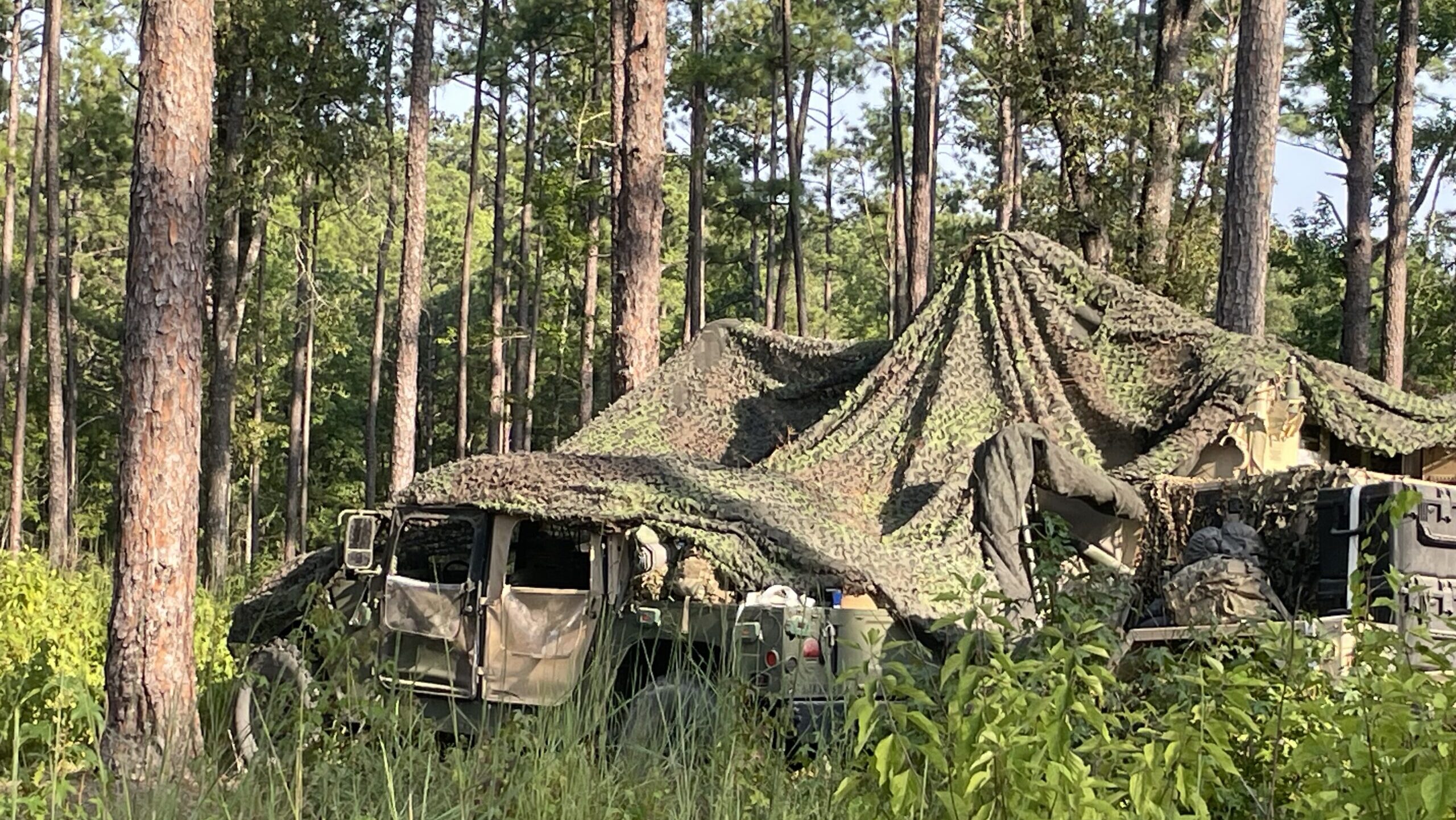Soldiers fire a Guided Multiple Launch Rocket Systems from their M270A1 Multiple Launch Rocket Systemin September 2021 during the Thunder Cloud live-fire exercise in Andoya, Norway. (US Army/Maj. Joe Bush)
WASHINGTON — This week, US Army Europe and Africa Commander Gen. Darryl Williams kicked off the annual Fires Symposium in Lawton, Okla. with, appropriately, a bit of a bombshell.
“Traditional cannon-based mass fires,” he told the audience, “are still the best solution in an EW environment.”
Williams, a veteran field artillery officer, has had a front row seat for nearly two years assessing some of those challenges and seeing how US provided weapons are working on the Ukrainian battlefield against an adversary with electronic warfare (EW) capabilities. Following decades of investments across the US military in precision capabilities, the claim that simpler weapons may be the best for the modern battlefield raises larger questions about whether the Army has been putting billions over billions of dollars down the wrong hole.
And yet, two other four-start generals speaking this week cautioned that one can’t move too far away from precision weaponry, an indication that Army leadership is still working through the results of the war in Ukraine and thinking through how it could apply to future conflicts with both Russia and China.
Williams himself called precision weapons “essential,” but cautioned that they cannot “supplant the indispensable volume of… unguided cannon fire,” on the battlefield.
Although Williams did not disclose which precision munitions are experiencing higher failure rates, there have been multiple reports of Russian forces jamming or spoofing munitions that rely on GPS.
Last month, for example, Pentagon acquisition chief Bill LaPlante disclosed problems with another weapon that Defense One potentially identified as the Ground-Launched Small Diameter Bomb (GLSDB). And in May 2023 CNN reported that Russia was using electronic jammers to throw the Guided Multiple Launch Rocket System (GMLRS) missiles off course.
GMLRS uses GPS guidance and has inertial navigation systems that are not susceptible to EW misdirection. However, that also makes them less precise than when guided by GPS. Regardless, Williams said GMLRS inertial navigation units are helping “offset” challenges inside Ukraine.
But the difference between precision munitions and conventional weapons is not black and white, and precision rounds have varying levels of technology and sophistication, said Byron Clark, a senior fellow at the Hudson Institute.
RELATED: Sullivan: Defense industry ‘still underestimating’ global need for munitions
On the lower end, the Joint Direct Attack Munition (JDAM) kit for dumb bombs, GMLRS and Excalibur rely on GPS guidance but when the GPS signal gets “fuzzy” or drops off, the weapon can rely on a inertial navigator, according to Clark. Inertial navigators, however, vary in accuracy and are not as precise as GPS guidance. When the weapon’s GPS guidance is jammed, the inertial navigators keep the round flying in the same direction, but do not receive external updates, meaning the weapon cannot track a moving target or have its target changed
In an EW environment like Ukraine, this essentially means the military cannot rely on having precision weapons.
“Without GPS, they become kind of dumb bombs again, and we’re having to aim them the traditional way of just sort of aiming and doing sighting and spotting, you know, figuring out how to land the artillery in the right place,” Clark told Breaking Defense on Thursday. “It’s like going back to the 20th century old school method of fires.”
When it comes to the Army Tactical Missile Systems (ATACMS), though, each round has multiple inertial navigation units “knitted” together with software. If the round loses GPS guidance, that technique still provides the weapon with accuracy, Clark explained.
Then there are more higher tech weapons like the future Precision Strike Missile (PrSM), Tomahawk cruise missile and Joint Air-to-Surface Standoff Missile (JASSM) that also include seekers and terrain mapping.
“These more sophisticated weapons will have [something] like a radar system that’s measuring the altitude of the cruise missile above the ground, and it could use that to do terrain mapping and figure out, ‘Okay, am I going approximately the right direction, because I should be able to tell based on the altitude and the terrain that I see underneath me,’” Clark said.
Some of those higher-end weapons, like JASSM and Tomahawk, can also host a passive radio frequency sensor designed to detect known emitters like radio towers. The military can preprogram it to use radio towers to geolocate and continue towards the target if it loses GPS guidance.
Europe Vs The Pacific
Lessons learned from the Ukraine conflict absolutely have applicability elsewhere. But when the distances get longer, the need for higher-end weapons become unavoidable.
US Army Pacific commander Gen. Charles Flynn, for example, is monitoring the growing EW challenges while also awaiting new, longer-range precision munitions like the PrSM and Dark Eagle hypersonic weapon. His area of responsibility was also the first to recently receive the new Mid-Range Capability launcher development, also known as Typhon, that fires precision SM-6 and Tomahawk cruise missiles. The Philippines was the first official international stop for that new weapon when the 1st Multi-Domain Task Force deployed there for a series of exercises.
Speaking with reporters Wednesday, Flynn said while he needs area fire weapons like mortars and howitzers, precision munitions remain essential.
“Maybe a mortar or two Howitzers have a role on the modern battlefield…and I would argue that that particular asset also plays a role out here,” Flynn said on a call. “But out here, just like in Europe, you also need another set of equipment and types of munitions that are precision in nature, you know, GMLRS, ATACMS and… long-range precision fires.”
“All of those are going to be needed in today’s environment, and certainly into the future,” he added.
That Flynn would still be prioritizing high-end munitions makes sense, given the differences between his theater and that of Williams. Unlike in Europe, Flynn is challenged by a more dispersed area with larger distances and water between key locations, and without a NATO-like alliance. That has meant striking new bilateral agreements with countries for US equipment flow in — temporarily and more permanently — practicing the quick deployment of long-range fires and developing new precision munitions with a longer range and ability to target ships.
With both modern-day, expensive munitions and simpler shells being needed for the battlefield, the challenge becomes figuring out how to budget for both. While commanders like Williams and Flynn gather observations from their respective theaters and help translate those into requirements, Army Futures Command head Gen. James Rainey is tasked, in part, with helping make that happen.
Rainey recently helped pen a new tactical fires study for service leaders that may reshape artillery plans. Similar to how the previous long-range fires study helped shape programs like MRC and hypersonic weapon development, it was a “no brainer” to take lessons out of Ukraine and apply that to cannon artillery, he explained.
“It is helping us think about things we should be experimenting with. things we should be looking at, [and] potentially adjustments that we should make to some of our programs,” Rainey said on the sidelines of the Ash Carter Exchange. (Earlier this year the service announced it had stopped work on the Extended Range Cannon Artillery, or ERCA, platform prototype and would ask industry to demo what they have today.)
When it comes those EW challenges with precision munitions in Ukraine, Rainey said, “We’re paying attention, we’re learning.”
“I think that there will be a need for precision guided munitions: I think there will be the need for conventional munitions,” he added. “And just like always in war, you know, you’re gonna have way more of the conventional stuff than you have the precision stuff.”
Options Ahead
As leaders like Rainey weigh on the future arsenal, the war in Ukraine rages on — with new feedback constantly heading back to the states for incorporation into both tactics and technology.
The US is continuously upgrading weapons sent to Ukraine to address vulnerabilities, according to one US Army source. That source declined to provide specific details about those modifications but noted that there is no silver bullet or single system that can win the war.
Industry, too, is incorporating feedback from the field. AeroVironment’s Switchblade 300 and 600, two precision guided loitering munitions, have made their way into Ukraine’s arsenal. During a Wednesday interview with Company CEO Wahid Nawabi, he explained that his team is continually learning from Ukraine’s war and making “a lot of improvements to our products” to respond to battlefield challenges. Those changes, he noted, include a new autonomy retrofit kit that uses terrain mapping for targeting.
Clark surmised that the Department of Defense could be looking at its options for boosting GMLRS and the JDAM kit’s accuracy when jammed. Both weapons, he added, could be candidates for other navigation systems like Europe’s Galileo global navigation satellite system or SpaceX’s Starlink — the latter of which has been at least somewhat compromised by Russia.
“If you’re Russia, you would have the jam GPS and Galileo,” complicating their EW strategy, Clark added. However, those changes significantly drive up the per unit cost for the US, and likely could not happen quickly.
“GPS was a great way to kind of cheaply add precision to every one of its weapons, and now they have to rethink how to do that,” Clark said. “That’s the challenge the DoD running into, these are all supposed to be cheap weapons, we can buy at scale, and [now] making them too sophisticated.”
Michael Marrow in Tampa, Fla. contributed to this report.











